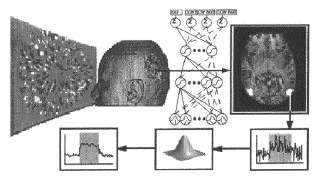Lucia M. Vaina, MD, PhD

Professor, Biomedical Engineering
Research Professor of Neurology, School of Medicine
Phone: (617) 353-2455; Fax: (617) 353-6766
Email: vaina@bu.edu
Office: ERB 315
Research Interests
Computational visual neuroscience: neuronal mechanisms underlying spatial representation, visual motion perception, perception and action, using functional neuroimaging, psychophysics and computational modeling.
Theoretical Engineering and Neuroinformatics: development of computational tools to facilitate and automate the analysis of large volume of fMRI and MEG data and find patterns in the data (data mining). We will both build the tools for general use, and apply them to specific research projects in brain science.
Current Research
Dr. Vaina’s main areas of current interest involve: (a) models of visual motion analysis in the human brain based on computational, psychophysical, structural and functional-neuroanatomical methods; (b) functional plasticity-learning and neurocovery: physchophysics, functional neuroimaging and neuronal network models; (c) Functional MRI of the human visual system.

Selected Recent Publications
Vaina L.M., Rushton S.K. “What neurological patients tell us about the use of optic flow” Int. Rev .Neurobiol. 44: 293-313 (2000)
Vaina L.M., Soloviev S., Bienfang D.C., Cowey A. “A lesion of cortical area V2 selectively impairs the perception of the direction of first-order visual motion” Neuroreport 11(5): 1039-44 (2000)
Vaina L.M., Cowey A., Kennedy, D. “The Neuroanatomical Damage Producing Selective Deficits To First Or Second Order Motion In Stroke Patients Provides Further Evidence For Separable Mechanisms” Human Brain Mapping 7: 67-77 (1999)
Clifford C.W.G., Vaina L.M. “A Computational Model of Selective Deficits in First- and Second-order Motion Processing” Vision Research 39: 113-130 (1999)
Clifford C.W., Vaina L.M. “Anomalous perception of coherence and transparency in moving plaid patterns” Brain Res. Cogn. Brain Res. 8(3): 345-53 (1999)